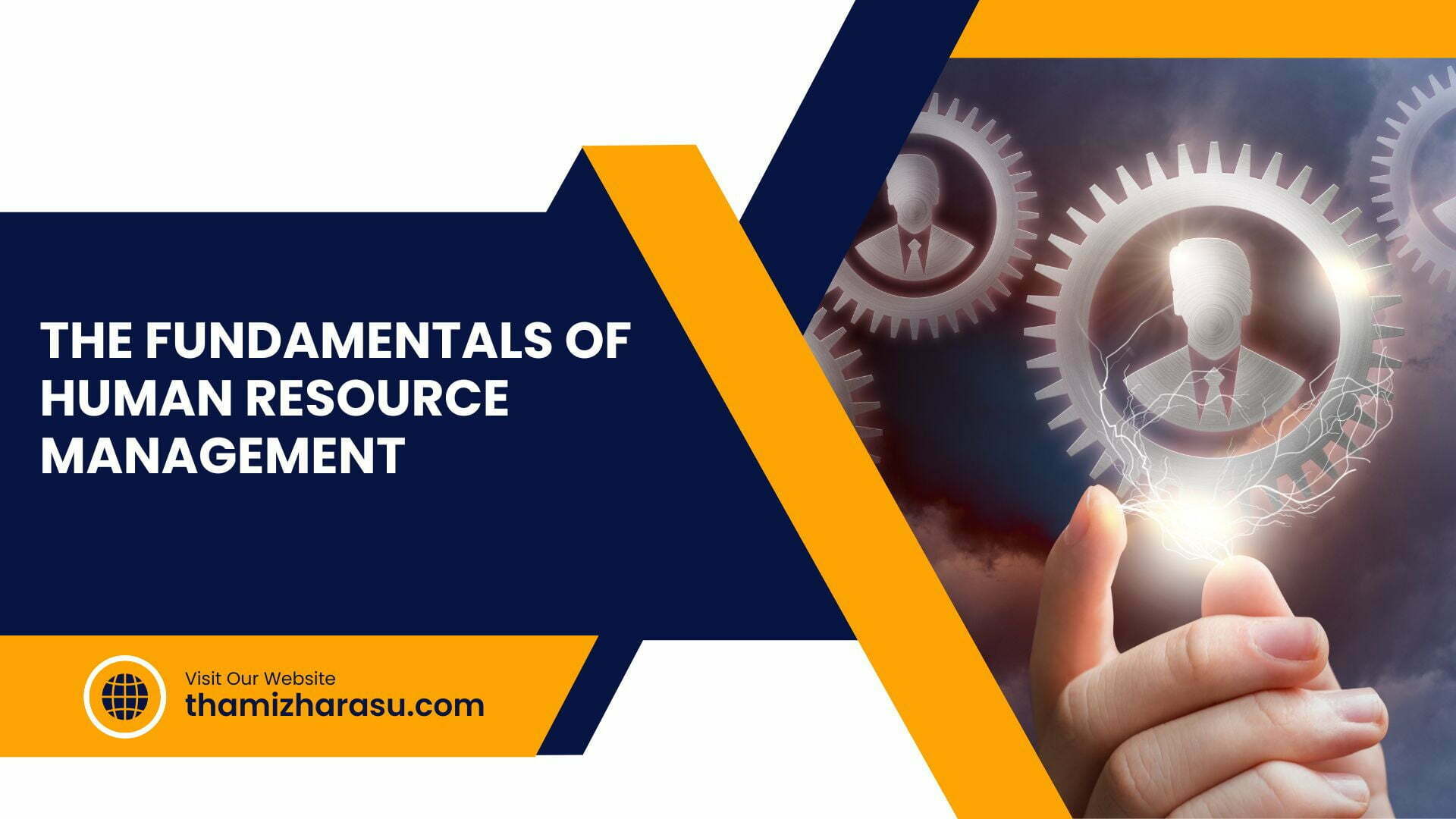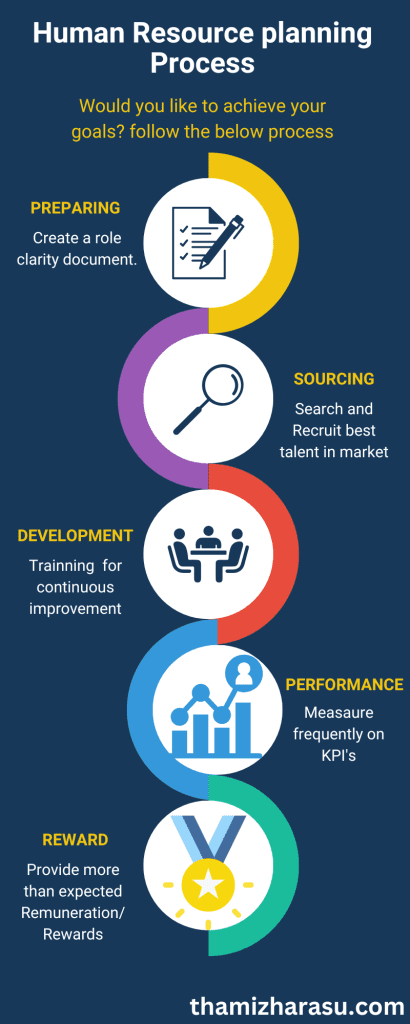- 02/03/2023
- Posted by: Thamizharasu Gopalsamy
- Category: Human Resource

The Fundamentals of Human Resource Management: Human resource management is a crucial function in any organization, whether big or small. It involves managing the most important asset of an organization – its people. From recruitment to retirement, human resource management plays a critical role in ensuring that employees are happy, productive, and engaged. In this blog post, we will delve into the basics of human resource management and why it is so important for organizations to get it right from the start. So buckle up and let’s explore!
1. What is Human Resource Management?
Human resource management (HRM) is the process of managing people in organizations. It is responsible for the attraction, selection, training, development, and retention of employees. HRM also handles employee relations, benefits, and compensation.
The main aim of HRM is to ensure that employees are able to contribute to the organization’s success. To do this, HRM must identify and assess the needs of the organization and its employees. It must then match these needs with the right people.
Once the right people have been recruited and hired, HRM must provide them with training and development opportunities so that they can reach their full potential. Finally, HRM must create a positive work environment and provide motivation so that employees remain loyal to the organization.
The Role of Human Resources in a Company/Organization
Human resources play a vital role in any company or organization. They are responsible for attracting, hiring, and training employees. They also handle employee benefits and payroll. In addition, human resources help to create a positive work environment and foster good relations between management and employees.
2. Benefits of Strategic Human Resource Management
Human resource management is critical to the success of any organization. By definition, human resource management is the process of managing people in organizations. In other words, it is the art and science of acquiring, developing, and retaining employees.
There are many benefits of strategic human resource management. Perhaps the most important benefit is that it helps organizations achieve their strategic objectives. Strategic human resource management aligns the goals of the organization with the goals of the individual employees. This alignment ensures that everyone is working towards the same objectives and promotes a sense of ownership and commitment among employees.
In addition, strategic human resource management can help organizations improve their financial performance. A well-managed workforce is a productive workforce, and a productive workforce translates into increased profits. Furthermore, effective human resource management can help organizations save money by reducing turnover and increasing employee retention. Finally, good human resource management practices can lead to improved customer satisfaction and loyalty, which can translate into increased sales and revenue.
3. Common HR Practices and Activities
Human resource management is the process of overseeing an organization’s employee-related activities. The purpose of HRM is to ensure that an organization’s employees are able to contribute to the company’s success and meet its objectives.
There are a number of common HR practices and activities that all businesses should take part in:
– Employee recruitment and selection: One of the most important roles of HR is to attract, hire, and onboard new employees. This process begins with creating job postings, reviewing resumes, conducting interviews, and performing background checks. Once a candidate has been selected, HR will work with them to create an offer letter and help them transition into the company.
– Employee training and development: It is important for businesses to invest in their employees’ development so they can be successful in their roles. Training can be provided on topics such as customer service, communication, leadership, and software applications. Employees can also be given opportunities to attend conferences or workshops related to their field.
– Employee benefits and compensation: HR is responsible for designing and administering employee benefit programs such as health insurance, retirement plans, and paid time off. They also negotiate salaries and wages with employees based on their experience, skillset, and performance.
– Employee relations: Maintaining positive employee relations is another key function of HR. This includes handling issues such as workplace conflict, harassment claims, and disciplinary actions. By fostering a positive work environment, businesses can reduce turnover rates and increase employee satisfaction.
4. Challenges of Human Resource Management
Human resource management is a critical function for any organization. It is responsible for attracting, hiring, and retaining employees. It also manages employee benefits and payroll.
However, human resource management can be a challenge for organizations. They must ensure that they are complying with employment laws and regulations. They must also be able to attract and retain high-quality employees. Additionally, they must manage employee benefits and payroll in a way that is cost-effective for the organization.
5. Legal Considerations in Human Resource Management
There are a number of legal considerations that must be taken into account when managing human resources. These include employment law, equal opportunity law, data protection law, and health and safety law.
Employment law covers the relationship between employers and employees. It includes contract law, which governs the terms and conditions of employment, and labor law, which covers issues such as working hours, holiday entitlements, and pay.
Equal opportunity law prohibits discrimination on the basis of race, gender, disability, or other protected characteristics. This means that all employees must be treated fairly and equally in terms of their working conditions, pay, and opportunities for promotion.
Data protection law regulates how personal data is collected, used, and stored. This is important to consider when handling employee records containing sensitive information such as medical history or financial details.
Health and safety law requires employers to provide a safe working environment for their employees. This includes ensuring that premises are safe, machinery is properly maintained and adequate health and safety training is provided.
6. Strategies for Successful HR Management
In order to be successful, HR management must first understand the importance of human resources within a company. Without a proper understanding of how important human resources are, it will be difficult to properly manage and utilize them. Additionally, strategies for successful HR management should align with the overall goals and objectives of the company. Some common strategies for successful HR management include:
1. Properly identifying the company’s human resource needs: In order to successfully manage human resources, it is important to first assess the specific needs of the company. This includes determining the number of employees needed, as well as the skills and experience required.
2. Creating an effective recruitment strategy: Once the company’s human resource needs have been identified, an effective recruitment strategy can be put into place. This may involve advertising open positions, conducting interviews, and making job offers.
3. Implementing training and development programs: Once employees have been hired, it is important to provide them with adequate training and development opportunities. This will help ensure that they are able to effectively perform their duties and meet the expectations of the company.
4. Creating an employee retention strategy: Keeping employees happy and motivated is key to successful HR management. An employee retention strategy may include offering competitive salaries and benefits, as well as creating a positive work environment.

7. Challenges Faced by HR Professionals
There are a number of challenges faced by HR professionals. One of the most significant challenges is attracting and retaining top talent. This can be a difficult task in today’s competitive marketplace. Another challenge faced by HR professionals is managing employee benefits programs. With the rising cost of health care, this can be a complex and costly task. Additionally, HR professionals must stay up-to-date on employment laws and regulations to ensure compliance with these laws.
Conclusion
Human resource management is a critical aspect of any business. It helps ensure that people are treated fairly and ethically, while also providing the resources needed to attract and retain top talent. By understanding the basics of HRM, organizations can more effectively manage their human capital and improve overall performance. Taking advantage of the range of services offered by HR professionals can help businesses maximize efficiency and profitability in today’s competitive market.
Leave a Reply
You must be logged in to post a comment.
